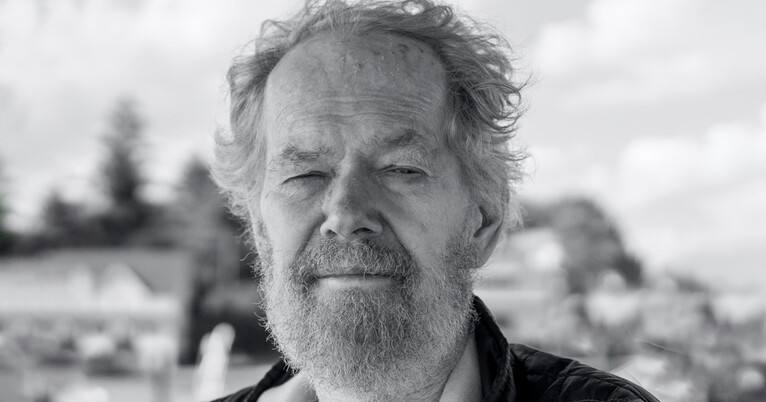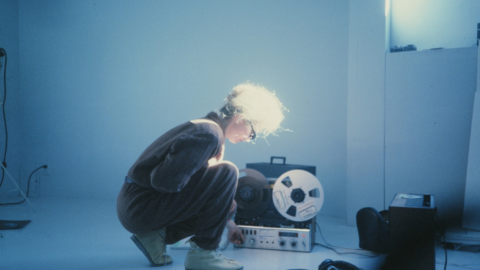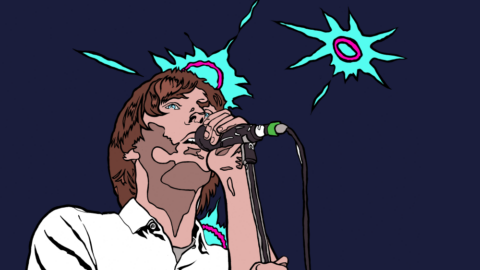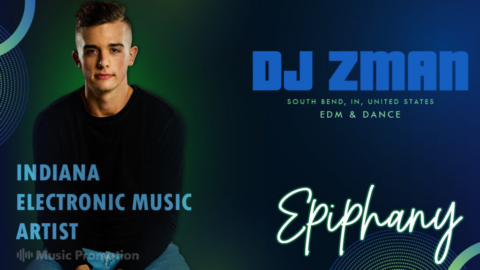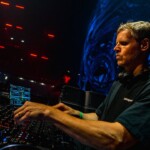In Memoriam
Revered composer and beloved teacher Ingram Douglass Marshall, of Hamden, Connecticut, died on May 31 at St. Raphael’s Hospital in New Haven of complications due to Parkinson’s disease. Marshall, whose work introduced listeners to highly imaginative new soundscapes, taught composition at the Yale School of Music as an adjunct faculty member. He was 80.
Born in 1942 in the New York City suburb of Mount Vernon, Marshall attended Lake Forest College in Illinois followed by graduate work in musicology at Columbia University in the mid-1960s. There he first encountered electronic music and worked at the legendary Columbia-Princeton Electronic Music Center. After a stint at New York University’s Composers’ Workshop, where he worked with Morton Subotnick and Serge Tcherepnin, he attended California Institute of the Arts, where he received an M.F.A. in 1971 and then stayed to teach courses in electronic music and text sound compositions. In an interview for Yale’s Oral History of American Music (OHAM), Marshall commented:
“The most profound thing that happened to me at Cal Arts had nothing to do with electronic music — it was Indonesian music. They had a Javanese gamelan there and a couple of Indonesian musicians, primarily a man named Ki Wasitodipura, or ‘Pak Chokro,’ as we called him. He had a big effect on me musically. He was very wise, one of these gurus. We all loved him. The first year of working with him and learning about the gamelan just went into my interior being. I lost interest in electronic music for a little while. I wanted to do Javanese music. So in 1971 I did go to Indonesia for about four months and heard a lot and studied a lot. That really turned my thinking around. I realized that the ‘zip and zap, bleep and blap’ kind of formally organized electronic music I had been trying to do simply wasn’t my way and that I needed to find a slower, deeper way of approaching electronic music. I think the Javanese sense of time being slowed down had a lot to do with it.
“I also appreciated the beautiful quality of the music itself. I instinctively always went for that, but sometimes a rational side of me said, ‘No that’s not enough. You’ve got to make some kind of structure here that’s going to override that.’ Structure’s very important, but I came more to trust my own instincts about going for the dark and the beautiful and the endless. The Indonesian music helped me a lot with that.
“The word ‘beautiful’ is hard to define, but in some way it’s always in the back of my mind when I’m writing. I do go for some sense of the lovely or the beautiful or the gorgeous, the sensuous: something that grabs, that’s palpable, and is not on the surface disagreeable. I really think that a musical experience should be enveloping, and the success of a piece could be based on really involving the listener, almost in a narcotic way — not to be zoned out or in a trance, exactly, but to be really wrought up in it.”
When Marshall returned to the United States in 1971, he continued to work in electronic music, but with a new approach colored by his experiences in Indonesia. Experimenting with live electronics and tape delays, he developed “The Fragility Cycles.” In 1973, he moved to the San Francisco Bay area where he became life-long friends with composer John Adams who conducted the premier performance of one of Marshall’s best-known pieces, “Fog Tropes,” in 1981. In the late 1980s, after nearly 20 years of living on the West Coast, Marshall moved with his family to Connecticut, where he resided for the rest of his life.
In addition to his M.F.A. from Cal Arts, Marshall held a B.A. from Lake Forest College and an honorary doctorate from Lake Forest College. He taught or served as artist in residence at California Institute of the Arts, San Francisco Conservatory of Music, Evergreen State College, Brooklyn College, The Hartt School, Dartmouth College, and Yale School of Music. He was the recipient of awards from the Guggenheim, Fromm, and Rockefeller Foundations, the Fulbright Scholar Program, the American Academy of Arts and Letters, and the National Endowment for the Arts, along with residencies at the American Academy in Rome, the Bellagio Center in Italy, and the Djerassi Foundation. Among his many commissions and performances were those from the Kronos Quartet, the San Francisco, St. Louis, Pittsburgh, Baltimore, and Seattle Symphonies, Los Angeles Philharmonic, Orchestra of St. Luke’s, Minnesota Orchestra, Netherlands Wind Ensemble, Theatre of Voices, American Composers Orchestra, Orpheus Chamber Orchestra, and the Bang on a Can All Stars.
In addition to the ensembles noted above, Marshall wrote a number of solo pieces for celebrated instrumentalists such as Benjamin Verdery, Sarah Cahill, Todd Reynolds, Libby Van Cleve, Lisa Moore, Ashley Bathgate, and Timo Andres ’07 ’09 M.M.
“Ingram possessed a gentle and powerful wisdom,” Verdery wrote. “His music cuts to the core of human emotion and experience and will remain timeless. A dear friend and mentor, Ingram Marshall was a giant standing next to us who made us feel that we were all giants.”
Although not a career academic, Marshall taught numerous students including Andres, who recounted, “I made Ingram’s acquaintance first as a campus personality. He’d glide benevolently into the music library where I worked at the circulation desk, I’d help him find scores and recordings, and we’d strike up conversations.
“Those conversations continued through my time as Ingram’s student, a distinctly un-rigorous course of study, but rather a wide-ranging, discursive, all-encompassing one; we were as likely to discuss the poems of Tomas Tranströmer, or a Bergman film, or the best way to cook wild mushrooms, as we were to analyze whatever it was I was writing at the time.
“I found I loved performing Ingram’s music, particularly the solo piano piece ‘Authentic Presence’ and later a chamber concerto he wrote for me called ‘Flow.’ His music is full of contradictions and unexplainable things; ephemeral but weighty; vast but never grandiloquent; understated yet unafraid of deep emotion or dramatic gesture. He quotes liberally, sometimes basing entire pieces on preexisting material, yet his music never sounds like anything other than itself. His music is spare simple on the page, sometimes to the point of inscrutability, leading to lots of interesting challenges for interpreters. Yet in the right hands, they are some of the most beautiful and moving scores I know.”
Various monikers have been used to describe Marshall’s music, including California Minimalist, New Romantic, and Post-Modernist, but the only term the composer himself endorsed was Expressivist. Adam Shatz of The New York Times wrote that “His music is some of the most stirring spiritual art to be found in America today.” While Edward Strickland described its “dark Romantic sense of abiding gloom with hints of transcendence.”
Marshall described his compositional process in an OHAM interview: “I realized that the way I put my pieces together — they are very fragilely constructed. It’s like when I’m building something I’ve forgotten to put an underpinning beforehand to make it really strong — but I’m going to keep going because I know I’m on the right track. Rather than go back and fix it up, I just keep going and hope the structure holds. Somehow, miraculously, it does. That’s the way I compose. I sometimes think I’m not approaching it from the ground up. I’m starting up in the air. So maybe structurally my music is always a little fragile.”
Marshall was gentle, kind, unassuming, and friendly. He left behind numerous devoted friends such as the photographer Jim Bengston with whom he collaborated on “Alcatraz” and “Eberbach” and whose photographs are featured on most of Ingram’s recordings.
Composer and bassist Jack Vees said: “Ingram and his music both offer a comforting presence. However, this doesn’t come in the way of simple platitudes. Instead of dramatic (and unnecessary) complications, he offers an honest complexity, one where our attention is gently guided to check out the myriad of relationships between a few basic elements, rather than to flood the field with too much frippery.
“I think most people feel clean after listening to an Ingram piece — or having a conversation with him. It’s partly due to encountering his own genuineness, but, in fact, his deeper artistry may be that he manages to coax out of us our own authentic presence for at least a few minutes.”
“He had his own unique musical voice, and that is a rare treasure that will stay with us,” added composer Steve Reich. “He lived much of his early musical life in the Bay Area and as usual, listened carefully to what was going on around him. His well-known ‘Fog Tropes’ combines recorded fog horns with brass and shifting harmonies centered around A to capture the sound and mood of the Bay Area while also remaining totally elusive. “Hymnodic Delays” begins in C major with the hymn tune character strong, clear and intensified by the tape delayed repeats. By the third movement, “Swept Away,” we’re in a minor with some chords intentionally out of tune. Ingram Marshall’s music is not so simple. Like all real art, it’s impossible to nail down, but its beauty and intelligence are radiantly clear.”
Marshall is survived by his wife, Veronica Tomasic ’01 Ph.D., his son, Clement Marshall, daughter-in-law Samantha Do, and two granddaughters, his daughter Juliet Simon, and two grandsons. He was predeceased by his father, Harry Reinhard Marshall, Sr.; mother, Bernice Douglass Marshall; brother, Harry Reinhard Marshall, Jr; and half-sister, Patricia Jewett. Marshall’s remains will be cremated, and the inurnment will take place in private.
A concert honoring Marshall will be presented by the Yale School of Music Composition Department in the upcoming academic year. In addition, a group of musicians is currently planning a New York concert in Ingram’s honor. Memorial donations can be made to the BMI Foundation: https://bmifoundation.org/donate. Please indicate in the webpage’s comments section that donations are made in Ingram Marshall’s memory. Funds will be used to support young composers.
Some of the above content was used in New World Record liner notes, used by permission from Anthology of Recorded Music, Inc. © 2009.
Arts & Humanities
Managed by the Office of Public Affairs & Communications
Copyright © 2023 Yale University · All rights reserved · Privacy policy · Accessibility at Yale
